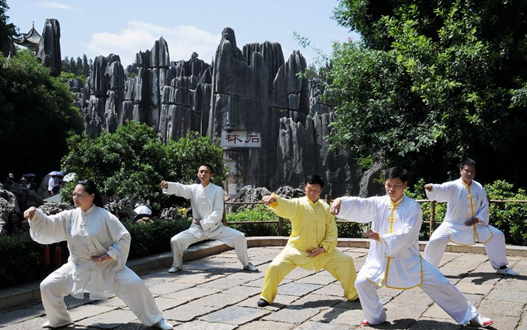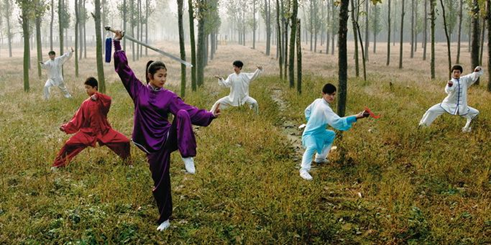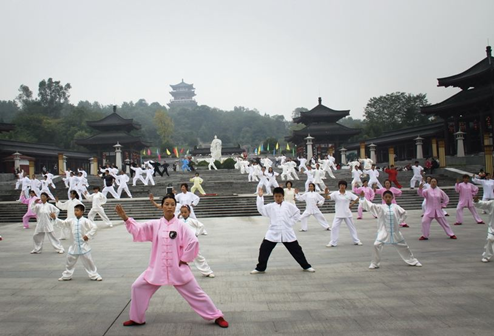Tai Chi, also known as taijiquan, is a traditional physical
practice characterized by relaxed, circular movements that works in harmony
with breath regulation and the cultivation of a righteous and neutral mind. It
is originated
from the mid 17th century in Wenxian county in Henan Province in central China,
it is now practiced throughout China by people of all ages and by different
ethnic groups, according to the official website of UNESCO.
Tai
Chi’s basic movements center on five steps and eight techniques with a series
of routines, exercises and hand-pushing skills. Influenced by Daoist and
Confucian thought and theories of traditional Chinese medicine, the practice
has developed into several styles named after a clan or a master's personal
name. These are passed down through clan-based transmission or the
master-apprentice model, and build upon the yin and yang cycle, and the
cultural understanding of the unity of heaven and humanity.

My
own experience since 1985 with tai chi, whose origins are traced to the 1600s
but whose roots go back further still, took me through a cross-cultural door in
2011.That is when, by being initiated as a disciple, or indoor student, of
grandmaster Chen Zhenglei in a formal, traditional ceremony, I became an
inheritor of this treasured art. Master Chen is a direct descendant of Chen
Wangting, the historically recognized creator of tai chi, which today comprises
the five major styles of Chen, Yang, Wu, Wu Hao and Sun.
Though
becoming a disciple has put on my shoulders the big responsibility shared by
each and every tai chi heir, my master is an inheritor in a much, much bigger
way, through both his birthright and his lifelong dedication to, and steadfast
practice of, the art.

Master
Chen was born in 1949, the same year the People's Republic of China was
founded, and began learning tai chi at the age of 8 from his uncle, the
renowned Chen Zhaopei. It was my master and three others-his cousin Chen
Xiaowang as well as Wang Xian and Zhu Tiancai-who were tasked with reviving and
spreading Chen style tai chi, which was practiced at that time only in
Chenjiagou. The hard work of these four in globally promoting Chen-style tai
chi, the original style that had long been eclipsed by the popularity of the
style derived from it, Yang tai chi, led to the masters being known as
"the four tigers of Chen village".
Though
it is now as popular as the Yang style, if not more so, Chen tai chi, the
original style-distinguished by, among other things, its constant coiling and
pronounced martial flavor-actually floundered and nearly vanished just before the
four tigers took up training. Their dedication to the clan's signature heritage
kept the multigenerational chain of this intangible treasure intact. They set
the standard for all who follow in their giant footsteps.

So
how do today's inheritors, as links between the past and future, keep the flame
of tai chi burning ever brighter? Speaking as a longtime collector of treasures
ranging from gemstones and gold to carved olive cores and rare blue amber, I
know well the cardinal rule of preserving such valuables: Handle with care. That
means honoring tradition, keeping intact the intent, flavor, principles and
techniques of tai chi, and, by emulating as precisely as possible our
masters-just as they were true to the teachings of their own masters-passing
the art down in as pure a form as humanly possible. That is no small order.
Thankfully,
in addition to an abundance of books written by the great masters of tai chi
over the years, we have technology on our side as well. Videos abound, and
livestream classes allow people around the world to watch, learn from and
interact with the leading proponents of tai chi, including the four tigers, who
are tireless teachers and prolific writers. The prospects for tai chi,
therefore, will be rosier still, and the incentive to protect this heritage
even stronger, now that UNESCO has added this art of Chinese origin to the list
of the world's irreplaceable treasures.

Forward from:
http://www.chinadaily.com.cn/a/202012/24/WS5fe3e11fa31024ad0ba9debd.html




Comment Cancel reply